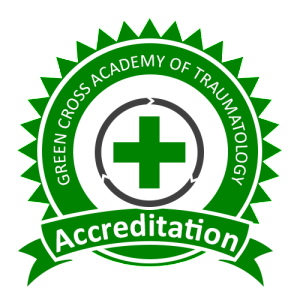Rationale for Accreditation

The Commission on Certification and Accreditation (the Commission) was established in 2002 by the Academy to increase and maintain the highest standards of training and education for the field. Accreditation is a status granted to programs that meet or exceed stated criteria of educational quality for training and education leading to one of the Academy's certifications.
Accreditation has two fundamental purposes: to certify the quality of the program and to assist in the improvement of the program. Like other accrediting bodies, the Commission works closely with the field of traumatology and the organizations and institutions vital to the field.
The Commission welcomes applications from all programs offering training and education in traumatology who wish to be accredited by the Academy. The Commission may require a self-study of the program, followed by an on-site visit by an evaluation committee and a subsequent review and decision by the Commission. The Commission applies a standard set of procedures for evaluating the program.
The Commission cannot guarantee the quality of individual graduates or of individual courses within programs it accredits. However, the Commission can give reasonable assurance of the context and quality of the education offered. Accrediting the traumatology training and education program signifies that the program has met or exceeded the standards of the field. The Accreditation Standards are available at this link.
In a number of fields (e.g., medicine, law, dentistry), graduation from an accredited program in the field is a requirement for receiving a license to practice in the field. Thus, program accreditation is recognized as providing a basic assurance of the scope and quality of professional or occupational preparation. This focus of specialized accreditation leads to accreditation requirements that are sharply directed to the nature of the program, including specific requirements for resources needed to provide a program satisfactory for professional preparation. Because of this limitation of focus to a single program, many specialized accrediting bodies require that the institution offering the program be institutionally accredited before consideration can be given to program accreditation. This is not a requirement of the Commission due to the youth of the field. This will change as the field matures and the number of educational programs (and variations in quality) increase.
In addition to evaluating the quality of the program's educational standards, the Commission seeks to help improve the quality of the program and the field generally. The Commission helps improve quality through feedback to programs regarding their self-study, their application materials, and through the site visit.
Thus, the focus of the Commission's attention is on the question: Does the program meet the Commission's accreditation standards? By answering in the affirmative, the exercise of accreditation automatically improves the field of traumatology by (1) providing a means for the participation of practitioners in setting the requirements for preparation to enter the profession, and (2) contributing to the unity of the professions by bringing together practitioners, teachers, and students in an activity directed at improving professional preparation and professional practices of traumatology.
In addition to assuring the health and vitality of the field of traumatology, the worth of accreditation is two-fold: for the good of the students and for the general (public) good.
For the good of the students, accreditation provides:
- An assurance that the educational activities of an accredited program have been found to be satisfactory and, therefore, meet the needs of the students;
- Assistance in the issuing of or credit for graduate's continuing education units (CEUs);
- Ease of transfer of inter-accredited program credit toward a certificate or registration; a prerequisite in many cases for undertaking licensure for a profession.
For the good of the public, the values of accreditation include:
- An assurance of external evaluation of the program and a finding that there is conformity to general expectations in the field;
- An identification of a program as exemplary because it voluntarily undertook explicit activities directed at improving the quality of its program(s), and are carrying them out successfully;
- An improvement in the professional services available to the public as accredited programs modify their requirements to reflect changes in knowledge and practice generally accepted in the field; and
- A decreased need for intervention by public agencies in the operations of educational programs, since the institutions, through accreditation, are providing for the maintenance and enhancement of educational quality.
